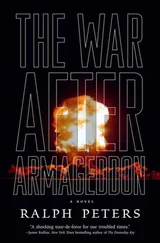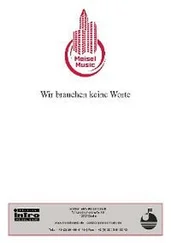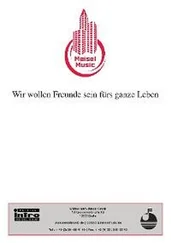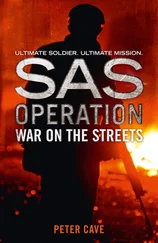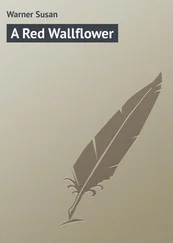A shock wave, then scorching heat hit the Trondheim as the LNG tanker vaporized before Bayer’s eyes.
An underwater shock wave rolled the K-480 almost on her beam ends. Scott had just enough time to shout a warning and dunk the scope before the shock wave arrived ahead of a deafening blast. He had spotted the LNG tanker, had followed the course of the two torpedoes but didn't want to believe what Litvanov intended until it was almost too late.
“Starpom, get a damage report—all compartments. See if anyone was injured.”
“Aye, Kapitan.”
“Yuri, lay aft to check on Alex and Botkin.”
Three minutes had passed since the initial explosion. It had seemed like three hours. The CCP had not been damaged, but debris littered the deck and crunched underfoot. The dive watch had regained control of the boat, had retrimmed and leveled her out again. Satisfied that they were still seaworthy, Scott took stock of the tactical situation.
“Kapitan, I count five perhaps six contacts,” reported the sonarman as Scott listened in.
One contact, a merchantman, was afloat but in two halves. The other two merchantmen, filled with cargo and with little reserve buoyancy, had sunk. Scott heard their bulkheads and hulls moaning in agony as they collapsed and as their cargo-filled compartments ruptured and filled with water. A third ship, the LNG tanker, had simply vanished.
Scott lifted an earmufif.
“These four contacts, here, sir, are the Norwegian frigates. Three of them are dead in the water; the other one is steaming south and has gone active again on sonar.”
“They’re hunting for the K-363.” As Scott watched, fresh sonar contacts from every point of the compass began to blossom on the monitors. “Search and rescue. It’s getting busy up there.”
“Sir, I’m sorry but I've lost the contact we had on the K-363,” said the sonarman.
Scott knew she had escaped, masked by noise from the sinking, collapsing ships, into The Sound.
“Rerun the torpedo run-in sequence. See if we can nail down the K-363’s firing point and get a trace on her.”
“Aye, Kapitan.” The sonarman initiated the backup and-recall program.
Scott saw Abakov enter the CCP. “How’s Alex?”
“Not hurt but shaken up. I put her in the wardroom to rest.”
“Good. Botkin?”
Abakov shrugged.
“Stay with her.” “Kapitan, all compartments secure,” reported the starpom. “No injuries.”
“Very well,” Scott said. He looked around at the men in the CCP. They were at their stations waiting for orders. “Periscope depth. We'll see what’s what.”
A merchantman torpedoed in the Kattegat, men killed, foreign submarines operating in what was essentially Norwegian-Danish-Swedish waters. Scott winced: There would be hell to pay when the world found out.
He gave a thumbs-up. The scope rose. The video monitor rolled diagonal bars then went to points of light as the periscope head broke water. A quick walkaround confirmed what Scott had expected to see: burning debris, sweeping searchlights, a listing Norwegian frigate attended by two mates. Bobbing, twinkling points of light on the sea marking the locations of survivors equipped with flashlights.
“Down periscope. Come to course one-four-zero. Ahead slow. Rerun the video tape half-speed.”
Played back, the videotape confirmed that one of the Norwegian frigates had been heavily damaged by the explosion of over six million cubic feet of liquid natural gas cooled to minus 160 degrees Celsius. Torpedoed, the gas aboard the ship had erupted with the force of a small nuclear weapon, and any vessel caught in it would have been sunk or badly damaged. The tidal wave created by the blast would have swamped smaller vessels in the vicinity and destroyed shore installations when it hit the beach.
Scott looked at the men in the CCP and knew they were thinking the same thing he was: The Chechens were determined to start a war.
Returned to the Winter Palace after a performance of Swan Lake by the Mariinsky Theater of St. Petersburg and, earlier, a tour of the restored Amber Room in Catherine the Great’s summer palace, the president of the United States slipped off his theater pumps and sipped an iced Sinopskaya vodka.
“And they call Pieter the criminal capital of Russia,” he said, using the name St. Petersburgers reserved for their city. “Not that I can see. I’ve had enough culture to last me the rest of my life. On the other hand, they do have a hell of a porn industry. Seen any live fuck shows, Paul?”
The national security advisor felt his face go hot. “No, sir.” He wasn't in the mood for joking with his boss but smiled anyway. Dressed in formal wear as the president was, he stood in the middle of the room, a glass of kvass in his hand. A worried look had displaced his smile.
“Give me a minute, Paul, to catch my breath. It’s been a long day and I’ve got three more days of meetings scheduled. And I can eat only so much caviar.” The president, looking very tired, drank some vodka. “Have you heard from Subitov?” he asked, referring to the Russian defense minister.
“A half-dozen times,” Friedman said. “His Norwegian counterpart, the others as well.”
“What about the press?”
“Nobody’s said anything yet. A reporter from The New York Times asked what I’d heard about it, but he seemed to believe it was an accident. I don’t know how long that will hold up, but so far we’re okay on it.”
“Is that it, Paul? Is that what Zakayev had in mind all along? Torpedo a liquid natural gas ship and scare the hell out of the Scandinavians?”
Friedman caught the president’s undisquised skepticism. “No, sir. That’s not what he had in mind.” “Not something that’s likely to make the Russians cave, is it?”
“Not hardly. It was a diversion to help him get away from the Norwegians.”
The president mulled this, then said, “Let’s find out what Karl thinks. Where are we set up?”
“In the library.”
The president slipped on his pumps and stood. Two Secret Service men hovering nearby buttoned their jackets and prepared to escort him down the hall to a small private library once used by Nicholas II. To another agent holding the door open he said, “Tell the First Lady I said not to wait up for me.”
Two portable video-imaging terminals sat open on a worn trestle table typical of those used by researchers working in the library. Colored cables snaked across the parquet floor linking the terminals to a compact video camera facing the president, and a secure troposcatter satellite system dish antenna. A charged-particle mesh security “bubble” had been assembled from individual panels and erected around the terminal setup.
The president drew up a chair in front of a monitor and said, “Good afternoon, Karl.”
A technician started a backup recording to DVD.
“Good evening, Mr. President. Sorry to make this so late for you.”
Friedman, sitting in a chair beside the president and facing the other terminal, said, “Karl, what’s the latest?”
“Sir, the Norwegians have put the casualty estimate at about eighty dead, eighteen missing. We’ve confirmed that four ships were sunk. A fifth, the KNM Trondheim, a Norwegian frigate, was badly damaged. Her commanding officer and two others were killed. I have a series of satellite photos that will give you some indication of the magnitude of the explosion.”
A picture came up on both terminals. Radford explained that it was a side-angle view from high orbit taken at night by the satellite’s infrared cameras. The coasts of Denmark and Sweden showed up in bright blue and the Kattegat in bright green. A red heat bloom clearly visible in the center of the photo drew their attention. Radford narrated the series in which the bloom grew to enormous size until it almost touched the coast of Sweden.
Читать дальше

